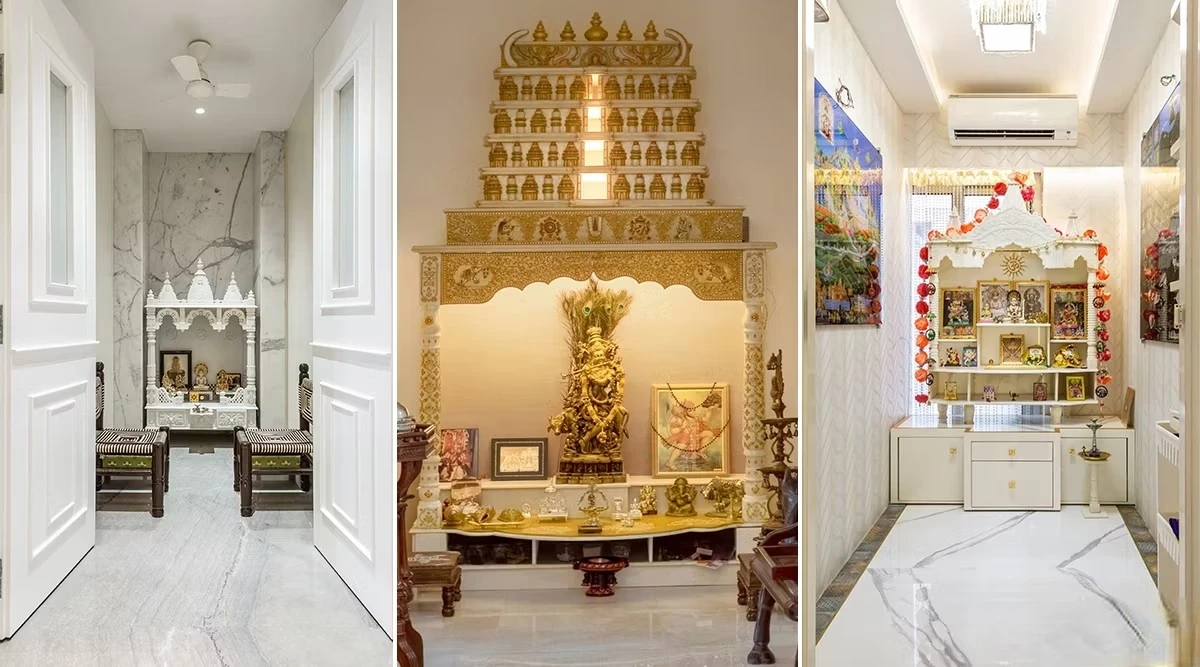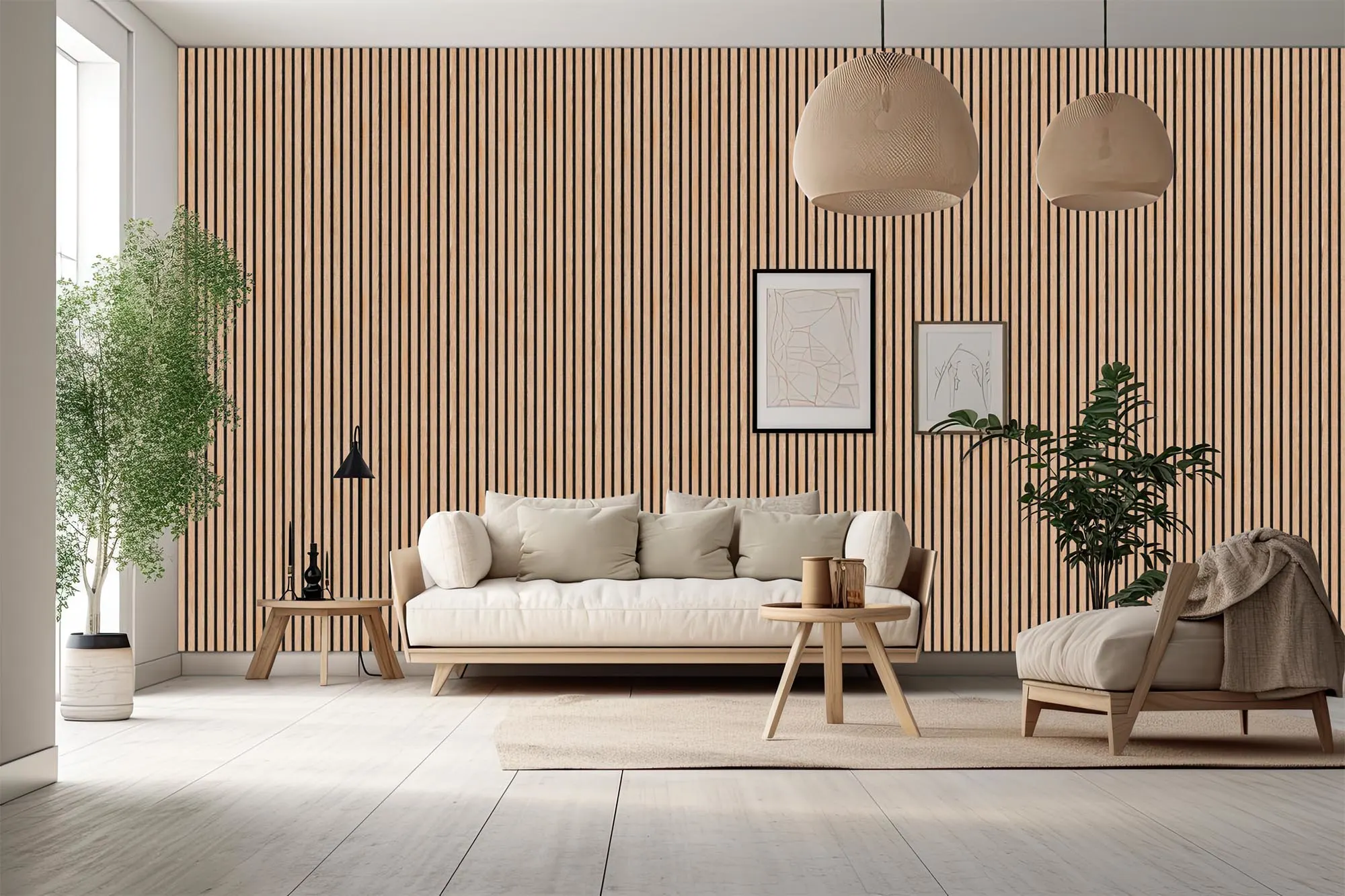Table of Content
The sacred space for worship holds immense importance in an Indian household, often referred to as Puja Ghar or Puja place. It is a dedicated area for prayer, considered holy, where we seek blessings for the happiness and health of the family. Homes with a consistent worship routine or a designated place of worship tend to radiate positivity, creating a harmonious atmosphere throughout the house. In ancient times, places of worship were predominantly constructed from wood. When envisioning a beautiful temple, the first thought often turns to a wooden mandir. Plywood, a board crafted by layering multiple wood sheets, is a common material for creating temples, popularly known as plywood wooden mandir design for home.
Types of Pooja mandir design
1. Traditional carved mandir design
/Traditional-carved-mandir-design-1 (1).png)
The classic temple design is characterized by its grandeur and prestige. Within the temple structure, there is a central platform dedicated to the main deity, accompanied by smaller spaces for other deities and a designated area for religious texts. An exquisite touch is added to the temple with the presence of a yellow bell hanging in one corner, contributing to the overall aesthetic. This traditional design often incorporates plywood, offering a beautiful and durable option for creating wooden mandirs in homes.
2. minimalist wall-mounted mandir design
/minimalist-wall-mounted-mandir-design (1).png)
The contemporary wall-mounted mandir represents a sleek and sophisticated design. The plywood mandir design is compact and effortlessly installed on the wall, featuring dedicated spaces for placing the idols of deities. Additionally, a compartment is incorporated to store other worship items. This minimalist design not only embraces modern aesthetics but also utilizes plywood, making it an ideal choice for crafting wooden mandirs in homes.
3. Plywood mandir Pooja Room with Seating
/mandir-with-seating-1.png)
This particular wooden mandir design is relatively more extensive, catering to those who prefer comfortable seating during extended worship sessions. It is an ideal choice for individuals engaging in prolonged worship. Crafted from robust plywood, this temple design boasts durability. Featuring two small cupboards, it provides convenient storage for worship items. Moreover, these designs include a dedicated space for placing the religious idols.
4. Modern plywood mandir design
/Modern-plywood-mandir-design (1).png)
For those who appreciate a contemporary and aesthetically pleasing mandir, opting for a wooden plywood design proves to be an excellent choice. This modern and attractive plywood mandir features a sleek, flat design with a polished wood finish, offering a visually appealing appearance. Additionally, the incorporation of glass adds an extra layer of allure to the design. Glass lead fitting can enhance the overall attractiveness of these temples. To elevate the design further, various types of lights can be used inside the glass, creating a unique and captivating ambiance within the plywood mandir.
5. Plywood mandir design with Storage
/Untitled-design-1.png)
If you're seeking additional space in your temple, this design is ideal for you. The top of the temple features shelves for placing idols of gods, while the bottom side is equipped with jalli doors, providing extra storage. This plywood wooden mandir design offers both functionality and aesthetic appeal.
6. Versatile plywood mandir design
/Versatile-plywood-mandir-design.png)
The versatile mandir design is suitable for homes that frequently change the temple's location. These designs are easy to move around, and if the temple is made of plywood, it becomes easier to change its placement as plywood mandirs are lightweight and easy to lift.
7. Simple plywood pooja mandir
/Simple-plywood-pooja-mandir (1).png)
If space is limited in your home, consider selecting a plywood wooden temple design with a simple and efficient layout. This design utilizes plywood with a central glass section, providing a space to place the deity and store worship items.
8. Plywood color mandir design according to vastu-shastra
/according-to-vastu-sastra.png)
If you have a basic temple in your house and wish to add vibrancy while adhering to Vastu Shastra principles, this plywood wooden mandir design would be suitable. This design incorporates colors aligned with Vastu Shastra, promoting auspiciousness for your family.
9. Charm of Classic plywood mandir design
/charm-of-classic.png)
The classic design temple has clean lines from the outside and is curved. It has a compartment to keep the murti of god and a storage box to keep the worship items. It is beautiful to look.
10. Indian door mandir design
/Indian-door-mandir-design (1).png)
Plywood temples with doors also exhibit a captivating aesthetic. They feature mesh doors and a triangular-shaped design on the top side. Inside the mandir, there is a plywood partition, dividing the temple into two parts. These temples are compact and lightweight, offering an elegant design for home use.
Also Read: Explore 10 contemporary wall mandir designs perfectly suited for Indian homes in 2024.







_1767769068.webp)




Ans 1. Robustness: Pooja mandirs are designed to endure for many generations. A common option is sheesham wood, which is renowned for its durability. It is a durable choice because of its resistance to termites and rot. Aesthetics: Teakwood is prized for its exquisite textures and organic shine.
Ans 2. A rule of thumb is to avoid placing the idols in front of each other. Just like the mandir direction in home, the idols too should be placed towards the northeast. You must make sure that you don't place the idols in a cramped manner. Also, you must note that the idols must be placed away from the walls.
Ans 3. As per Vastu Shastra, any temple or home Pooja Mandir made of wood is propitious and considered to be more religious. From wooden shelves to panels with curves and intricate designs, wood is just one among the very few materials to consider for your Pooja Mandir design at home and even in other spaces.
Ans 4. Wall-mounted pooja mandirs are a popular trend in Indian homes. They are compact, modern, and take up minimal space, making them an ideal choice for small apartments and homes.
Ans 5. Often, the mandir is a part of the living room so that it can be extended to accommodate more people. An area of approximately 5 x 7 ft is suitable for a spacious pooja room at home. If you are creating a wall-mounted mandir, a width of 3 ft and a height of 2.5 or 3 ft is ideal.
Ans 6. Pastel shades such as white, light green, and pink colour work great in pooja rooms. Other auspicious options include beige, yellow, and cream to bring peace and harmony into your home. Bright shades of blue, orange or red should be avoided as they don't add positive energy to the atmosphere.